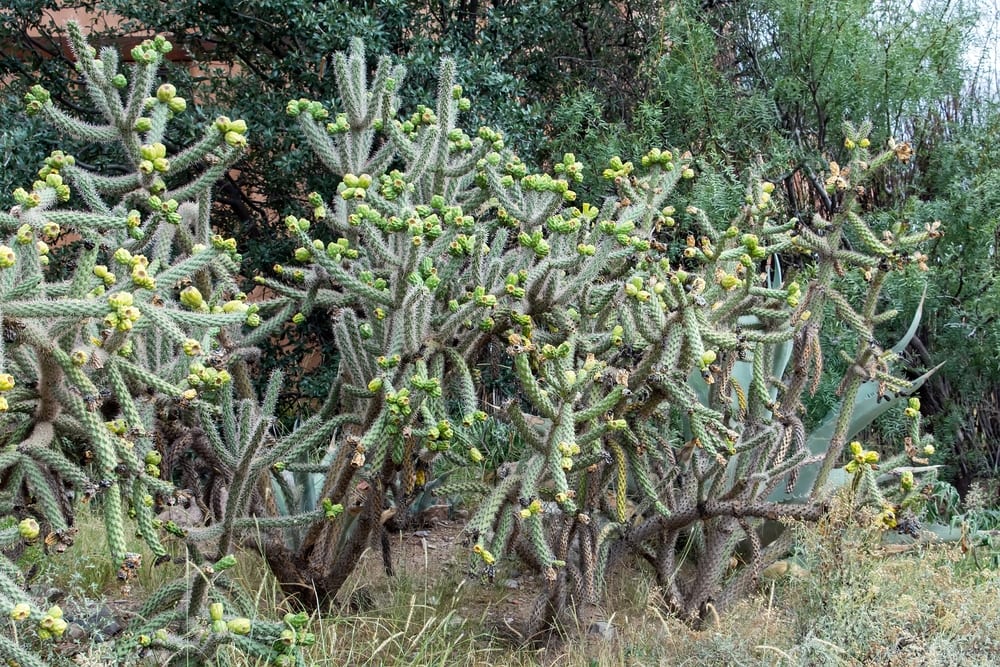In the vast canvas of the Texan landscape, where the horizon kisses the sky in a warm embrace, the species of cacti flourish like the sculpted silhouettes of ancient warriors. As hardy and resilient as the land itself, these unique plants are not mere flora but rather bold statements of survival, adaptation, and survival’s intricate dance with beauty. Texas is home to a plethora of cacti species, each with its own distinctive characteristics, ecological significance, and allure. Let us embark on a journey to uncover the outstanding varieties of cacti that paint the Texas terrain.
The Iconic Saguaro: A Giant Among Giants
Perhaps the most iconic of all cacti, the saguaro cactus (Carnegiea gigantea) towers majestically over the arid desert landscape. With its iconic arm-raising posture, it poses like a guardian of the desert, standing sentinel over its surroundings. These colossal cacti can grow to heights of up to 40 feet and live for over 150 years, becoming living monuments to the harsh yet vibrant ecosystem they inhabit.
Their striking green skin, adorned with splotches of white blooms in late spring, contrasts beautifully with the muted browns and yellows of the desert floor. Saguaros are not merely solitary figures; they form crucial habitats for various creatures. Woodpeckers and other birds find sanctuary within their spines, while desert mammals rely on their sweet, ripened fruit for sustenance. To witness a saguaro in full bloom is to witness nature’s artistry in its grandest form.
The Opuntia: The Multifaceted Prickly Pear
Among the diverse cacti of Texas, the Opuntia—commonly known as prickly pear—commands attention with its kaleidoscope of forms, colors, and uses. Featuring flat, paddle-shaped pads that appear like a green, succulent quilt, prickly pears thrive in various habitats across the state. Their vibrant flowers range from sunny yellows to deep magentas, creating a visual feast for pollinators and plant enthusiasts alike.
Beyond their ornamental value, prickly pears are functional powerhouses. The pads, also known as nopales, boast impressive culinary potential, offering a unique texture and taste that complements numerous dishes. Their tangy fruits, called tunas, burst with flavor and nutrients, from vitamins to antioxidants. The prickly pear encapsulates versatility—a testament to how resilience can yield both beauty and sustenance.
The Enigmatic Barrel Cactus: Nature’s Water Reserve
In the arid territories of Texas, the barrel cactus stands like nature’s amphora, storing precious water within. With its rounded physique and spines twisting outward like protective armor, it is a true testament to adaptation. Among the prominent species is the golden barrel cactus (Echinocactus grusonii), which can reach up to three feet in diameter and live for decades. The golden hue of its spines catches the sunlight, cascading a warm glow over the desert landscape.
Besides its stunning appearance, the barrel cactus serves an essential ecological role. During periods of drought, its juicy flesh provides hydration for desert travelers—be it wildlife or intrepid humans seeking survival in the hard scrabble of the wilderness. It is a captivating enigma of inherent beauty and primal necessity, reminding us that the harshest environments can nurture the most extraordinary life forms.
Unique Varieties of Cacti: A Palette of Diversity
Texas is a celebration of botanical diversity, and cacti epitomize this richness. Among the lesser-known yet equally fascinating species is the claret cup cactus (Echinocereus triglochidiatus), renowned for its vibrant crimson flowers that burst forth in a dramatic display during spring. The snowy white spines jutting from its ribbed body exemplify the paradox of beauty intertwined with seemingly harsh defenses—nature’s way of safeguarding its treasures.
Similarly captivating is the blue candle cactus (Machelluia spp.), a dramatic spectacle with its tall, slender stature and striking blue-green hue. Seen against the stark desert backdrop, it evokes a sense of whimsy, as if the desert has whimsically erected a beacon of color amid an expanse of muted tones. Its rare beauty serves as a reminder that hidden gems abound in the wasteland.
The Cultural Significance: Cacti in Texan Heritage
Beyond their ecological roles, cacti hold significant cultural importance in Texas. They are woven into the fabric of Texan identity, symbolizing resilience, endurance, and the spirit of the land. Indigenous cultures utilized cacti for food, medicine, and as material for crafting tools and clothing. The prickly pear, in particular, found a prominent place in regional cuisines—its influence lingering in contemporary dishes.
The artistic representations of cacti in Texan folklore and art reflect both admiration and reverence for these remarkable plants. Festivals celebrating the beauty and bounty of prickly pears and other cacti bring communities together, honoring local traditions and the spirit of living in harmony with nature.
Conclusion: Embrace Nature’s Resilience
Texas cacti embody the resilience and uniqueness of life in an unforgiving environment. Each variety, from the stalwart saguaro to the flamboyant prickly pear, offers a glimpse into the adaptability and ingenuity of nature. As you traverse the vast terrains of Texas, take a moment to honor these prickly residents. Their presence is an everlasting testament to the beliefs that beauty and survival often coexist, flourishing in even the most challenging conditions.





Leave a Comment